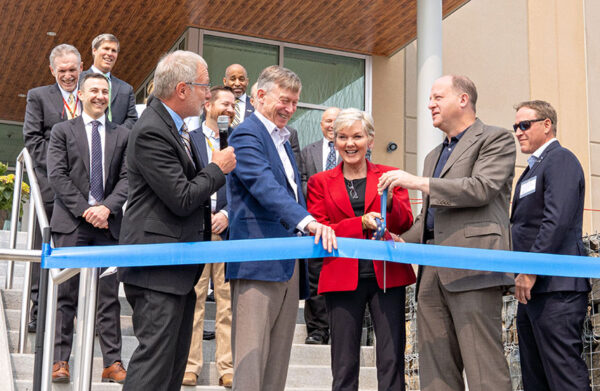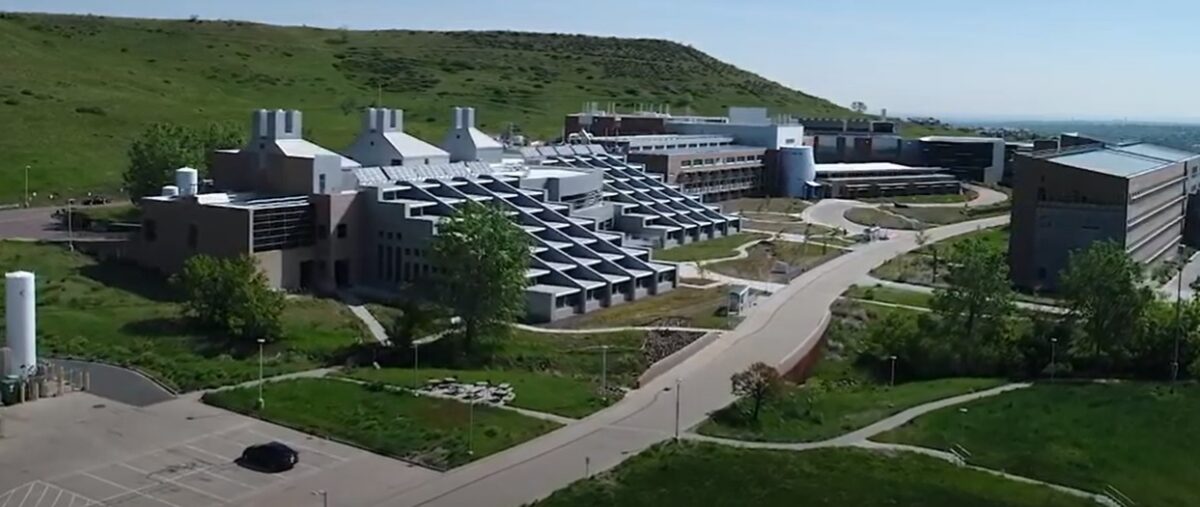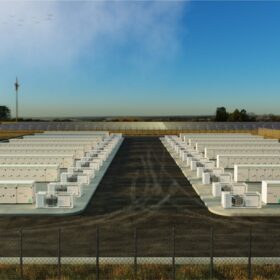The National Renewable Energy Laboratory (NREL), founded in 1977, recently held a ribbon cutting ceremony for a new laboratory—the first on its campus since 2013.
NREL is one of the U.S. Department of Energy’s 17 national research laboratories and the only one dedicated to renewable power sources. Based in Golden, Colo., NREL fills its main campus with offices, laboratories, product test sites, solar parking canopies and, now, the recently added Research and Innovation Laboratory (RAIL).
Department of Energy Secretary Jennifer Granholm was on hand for the recent ribbon-cutting ceremony, who marked the official opening of the new building with Colorado Governor Jared Polis.

The new lab, which will provide “wet” lab space for chemistry experiments, will be home to research aimed at moving the nation toward the goal of 100% clean electricity by 2035 and reaching net-zero carbon emissions by 2050.
“NREL, with its goals of getting to net zero, is amazing,” Granholm said. “We have real-world impacts that come out of this lab, and it’s only getting better thanks to the expansion that we’re here to celebrate.”
The current buildings on the 178-acre campus are dedicated to advancements in batteries, biofuels and solar, among other carbon-free technologies. The RAIL laboratory is the first building in a planned expansion, adding about 15,000 square feet to the campus.
NREL plans to expand the campus further, and recently took ownership of the former Camp George West site, which was used 120 years ago as training grounds for the Colorado National Guard. The portion of Camp George West acquired under a land swap with Jefferson County was most recently a correctional facility.
NREL intends to transform the 6.6-acre site into the South Table Mountain Energy Park (STEP), which will serve as an incubator for clean energy companies. The state of Colorado intends to build the Global Energy Park directly adjacent to NREL as a hub for the cleantech industry.
The Global Energy Park is expected to house young companies working in the clean technology space. Development of the site will start later this year, with a projected opening date in early 2026.
“We have never had a lab envelope so big that it could entertain a collaboration exchange. Most of the time, those labs are very limited,” said Michelle Slovensky, Intelligent Campus program manager at NREL. “This is unique, and we’re going to see what that exchange produces.”
In addition, NREL received $150 million in funding from the Inflation Reduction Act (IRA), which will enable additions and improvements to its facilities.
“Thanks to the historic IRA, we will be able to make vital upgrades to lab infrastructure and enable clean energy research and development that is imperative to addressing the climate crisis,” said Martin Keller, director of NREL. “The funds will accelerate three-plus years of planned capital investment to modernize research infrastructure supporting Department of Energy clean energy research and development activities, critical laboratory renovations, and deferred maintenance.”
NREL’s IRA funds have been designated for the following priorities:
- $93 million for modernizing research infrastructure, including new and expanded facilities to advance technologies such as sustainable aviation fuels, and advancing NREL’s Advanced Research on Integrated Energy Systems (ARIES) research platform that will support decarbonization goals in the grid, buildings, transportation and industrial sectors.
- $57 million for laboratory renovations and deferred maintenance to improve facilities for NREL researchers and enable the lowering of overall emissions from lab operations.
This content is protected by copyright and may not be reused. If you want to cooperate with us and would like to reuse some of our content, please contact: editors@pv-magazine.com.









By submitting this form you agree to pv magazine using your data for the purposes of publishing your comment.
Your personal data will only be disclosed or otherwise transmitted to third parties for the purposes of spam filtering or if this is necessary for technical maintenance of the website. Any other transfer to third parties will not take place unless this is justified on the basis of applicable data protection regulations or if pv magazine is legally obliged to do so.
You may revoke this consent at any time with effect for the future, in which case your personal data will be deleted immediately. Otherwise, your data will be deleted if pv magazine has processed your request or the purpose of data storage is fulfilled.
Further information on data privacy can be found in our Data Protection Policy.